Air fryer vs. oven and other cooking methods
8 min read time
24 October 2025
An air fryer opens up a world of new possibilities for your favorite ingredients and recipes. Transform your favorite vegetables, juicy meats and decadent desserts into crispy air fried creations.
Learn how an air fryer works and how it compares to other cooking methods and appliances to find out if an air fryer is essential for your kitchen ambitions.
Air fryer vs. oven and other cooking methods
Air fryer vs. deep fryer
Air fryer vs. oven: what’s the difference?
The most obvious difference between a standalone air fryer and an oven is size. An air fryer is a countertop appliance that can usually cook one dish at a time while an oven is a full-sized appliance that can handle multiple dishes or larger portions. The second major difference is function. An air fryer rapidly circulates heated air to cook and crisp up a range of foods. A conventional, non-convection oven uses still air to cook food. Different types of ovens may offer various functions like broil, bake, roast and even air fry.
Select KitchenAid® wall ovens come equipped with Air Fry Mode, like this 30" Single Wall Oven, so you can achieve delicious, crispy results right in the oven.
An air fryer can help add air frying or convection baking capabilities to your kitchen and offers a convenient size when preparing a single batch of chicken wings, bacon, salmon, zucchini fries or other fried favorites. However, a full-sized oven with air fry capabilities can let you air fry large amounts of food, which can be helpful when serving up platters of crispy hors d'oeuvres during dinner parties.
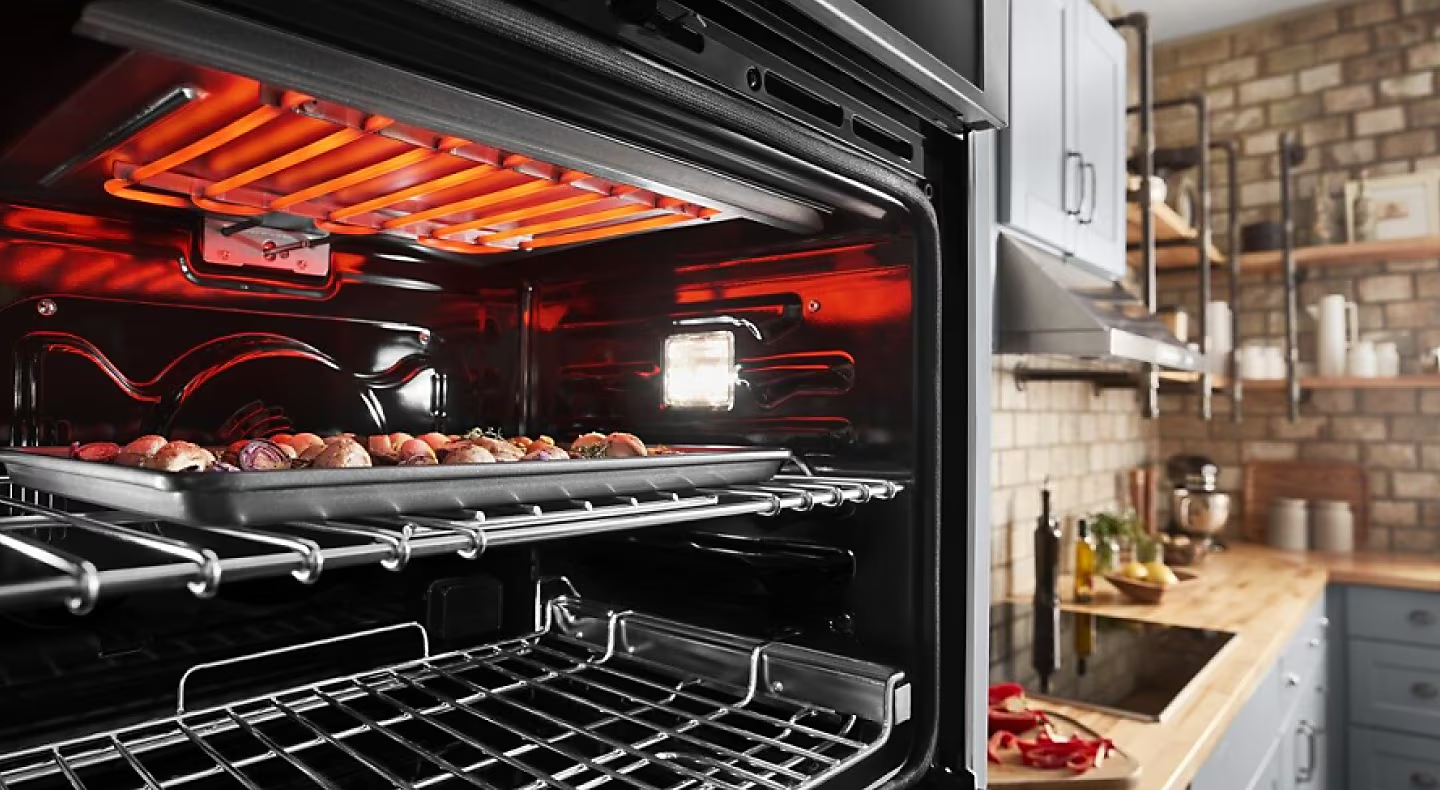
Air fry vs. bake: how do the cooking methods differ
An air fryer rapidly circulates heated air throughout the cooking cavity, helping to remove surface moisture from food and create a crispy exterior. Conventional, non-convection ovens use heating elements on the top and bottom of the cooking cavity, leaving the air fairly static. These ovens are better suited for baking delicate items and recipes that call for liquid batters.
Air fryers utilize a perforated basket to help expose all sides of your food for a nice, all-around crispy finish. While some air fryers come with a bake option, not all ovens feature air fry capabilities. Select KitchenAid® wall ovens feature Air Fry Mode, which circulates hot air around the oven cavity to help you achieve the crispy results you’re looking for. Most even come with a Dishwasher-Safe Air Fry basket, so air can completely circulate around your food and clean up can be hassle-free.
Learn more about air fry vs. bake settings and how to cook in an air fryer with these helpful guides from KitchenAid brand.
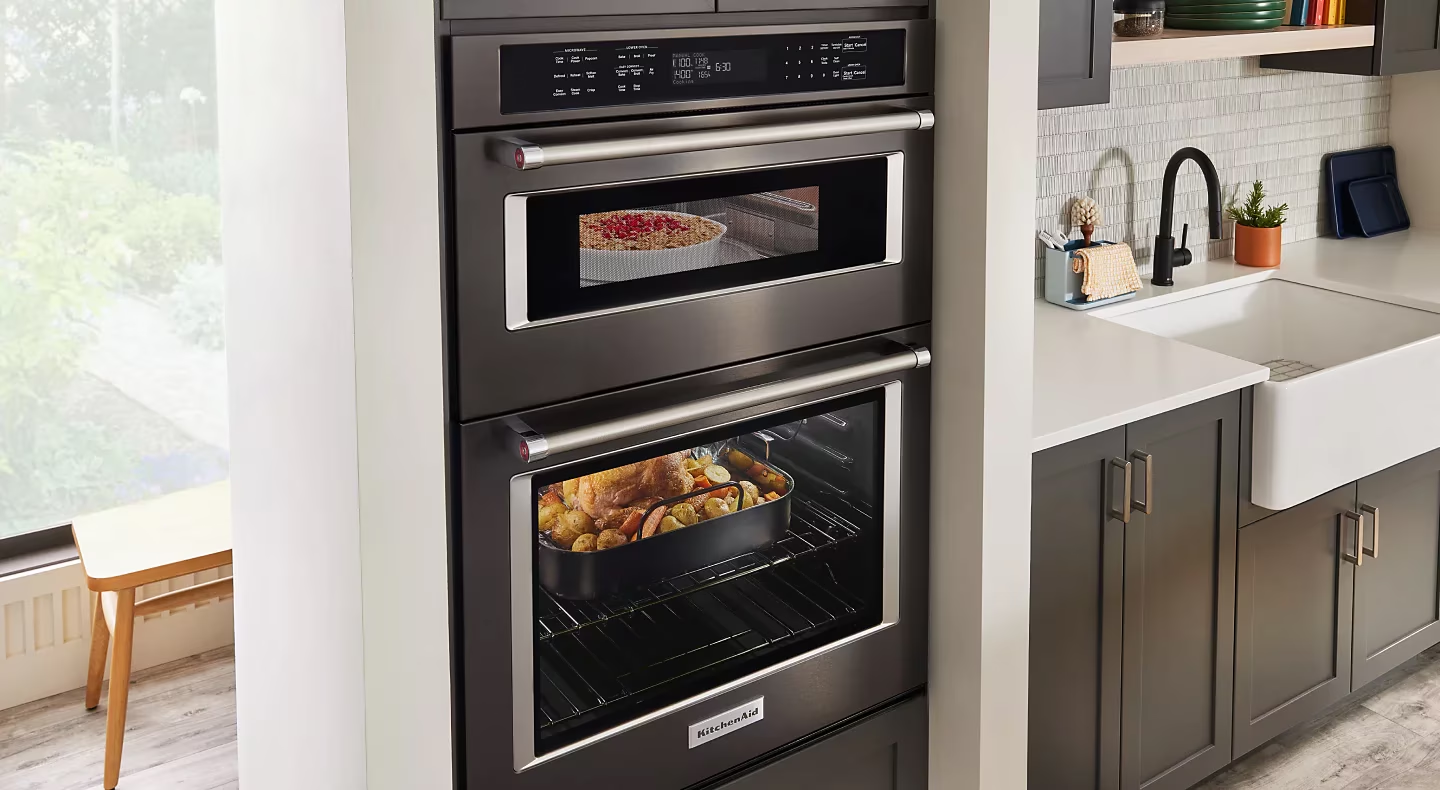
Air fryer vs. convection oven
An air fryer can be thought of as a sort of mini convection oven. Both appliances use a fan to circulate heated air throughout the cooking cavity. However, they are different—a convection oven has a larger capacity and air frying optimizes the cooking environment for crispy fried results. Some convection ovens, like this KitchenAid® 30" Double Wall Oven come with Air Fry Mode, so you can crisp and brown your favorite dishes right in the oven.
A convection oven has the same advantages over an air fryer as a regular oven—size. If you’re making multiple dishes or batches of food, a convection oven can help prepare it all at once. But if you’re simply preparing one pan of crispy fried cauliflower, KitchenAid® countertop ovens with air fry capabilities might be just the right size and can save you the time of heating an entire oven.
For maximum flexibility, why not have both? Use KitchenAid® wall ovens equipped with Air Fry Mode to crisp up tasty appetizers, bake decadent desserts, roast flavorful entrées and more.
Learn more about how a convection oven works and how to use it.
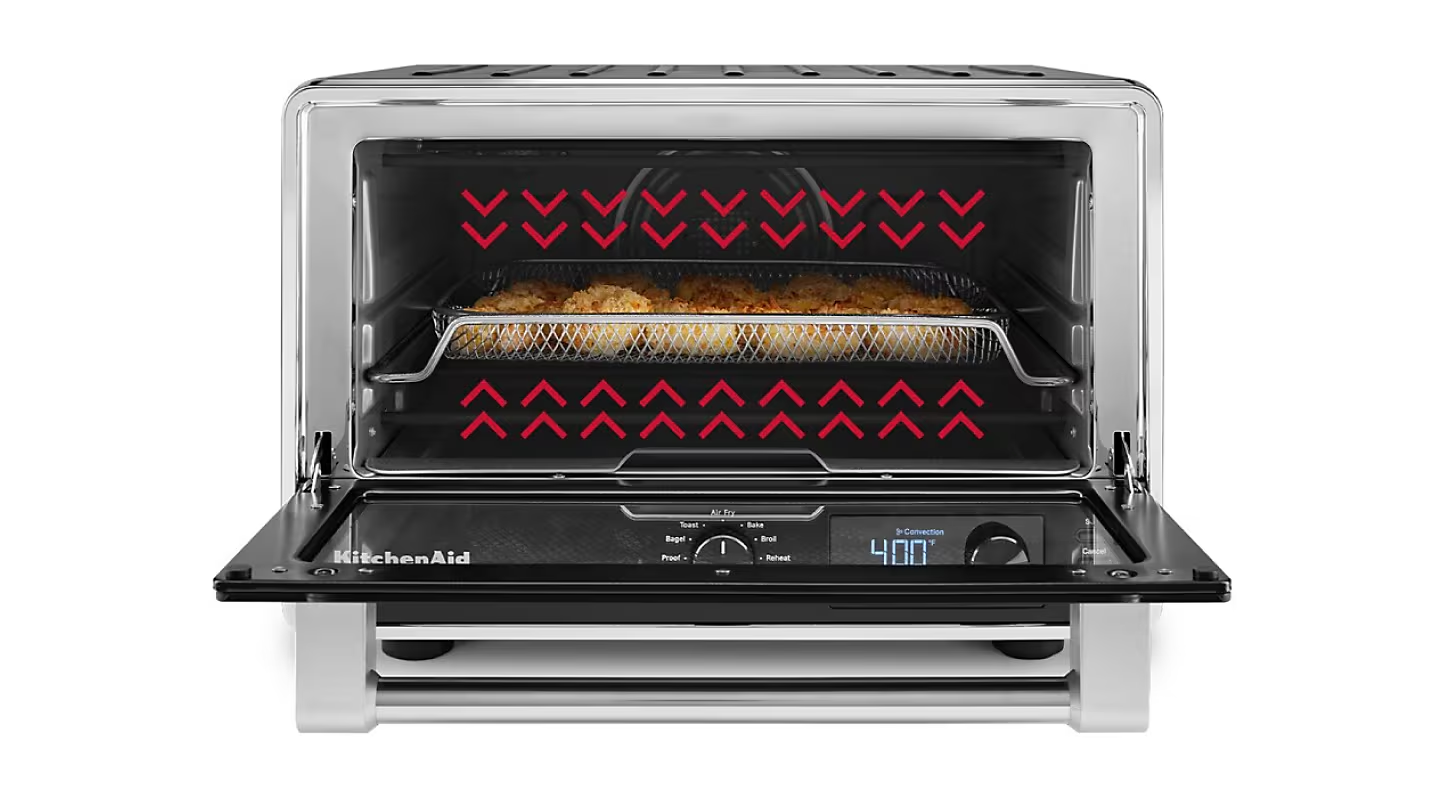
Air fryer vs. toaster oven
An air fryer is usually limited to the convection-like air frying function, while a toaster oven or countertop oven can offer a wider range of functions such as broil, roast and bake. Some countertop ovens even feature an Air Fry setting, maximizing your appliance’s functions.
Countertop toaster ovens with air fry capabilities enable you to explore new techniques beyond air frying with settings like dehydrate for dried fruits and meat jerky or highly specialized settings for pizza and dough proofing.
Both appliances come in a convenient countertop size that will usually prepare one batch of fried recipes like chicken tenders, sweet potato fries, spring rolls and more. Air fryers usually include a more vertical basket in which you layer food. This typically requires you to shake the basket or flip the food halfway through cooking. KitchenAid® countertop ovens with Air Fry feature a No-Flip Air Fry Basket and 360° Air Fry System so there’s no need to interrupt the cooking process. Learn more about air fryer ovens.
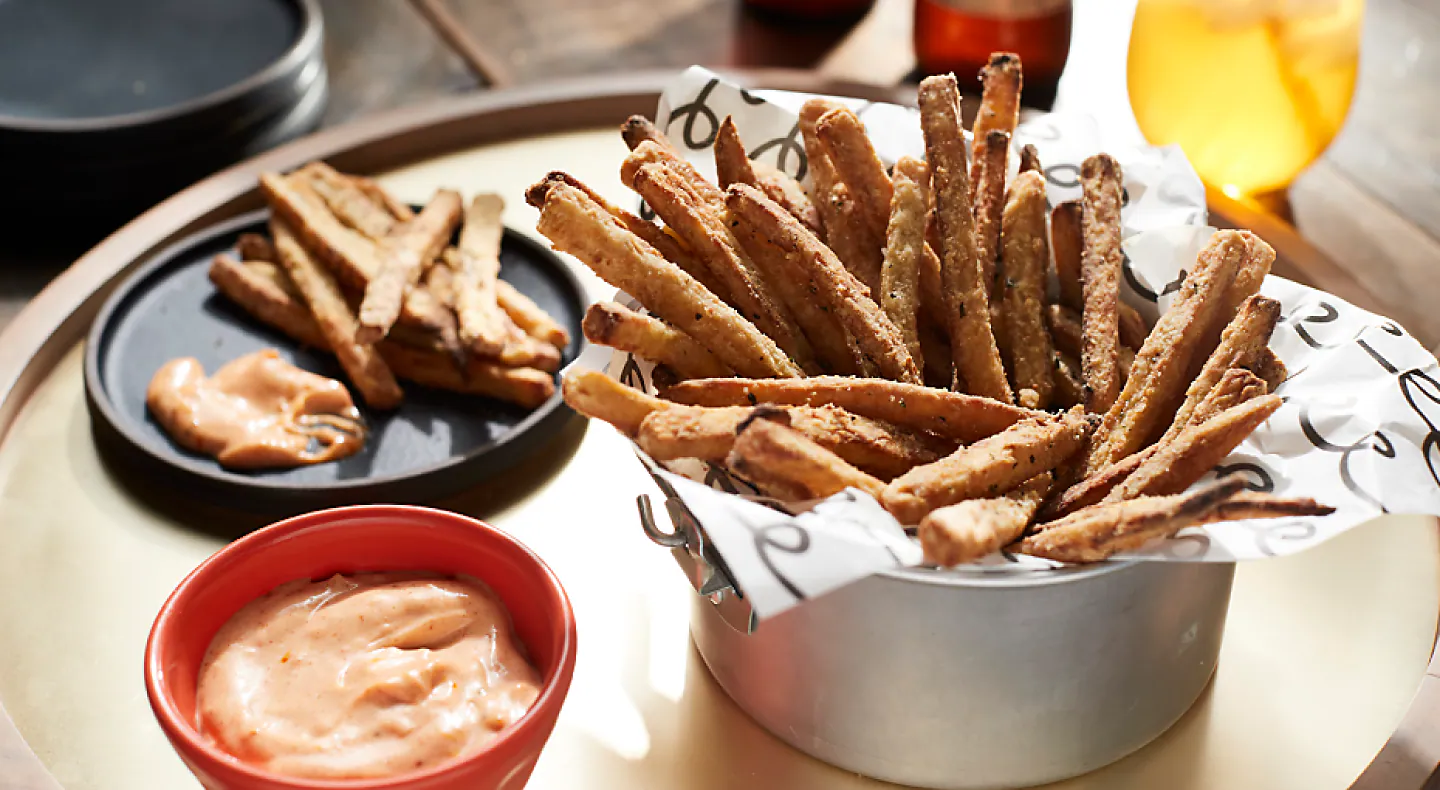
Air fryer vs. deep fryer
Deep frying is a cooking method that involves submerging food in hot oil or other fat. Air frying achieves a similar result to deep frying by relying on hot, moving air rather than oil.
A deep fryer appliance usually consists of a deep container that is filled with oil and heated, along with a basket that allows you to lower food into the oil. There is little to no oil used with an fryer—food is simply placed within the cooking chamber using a basket or perforated pan.
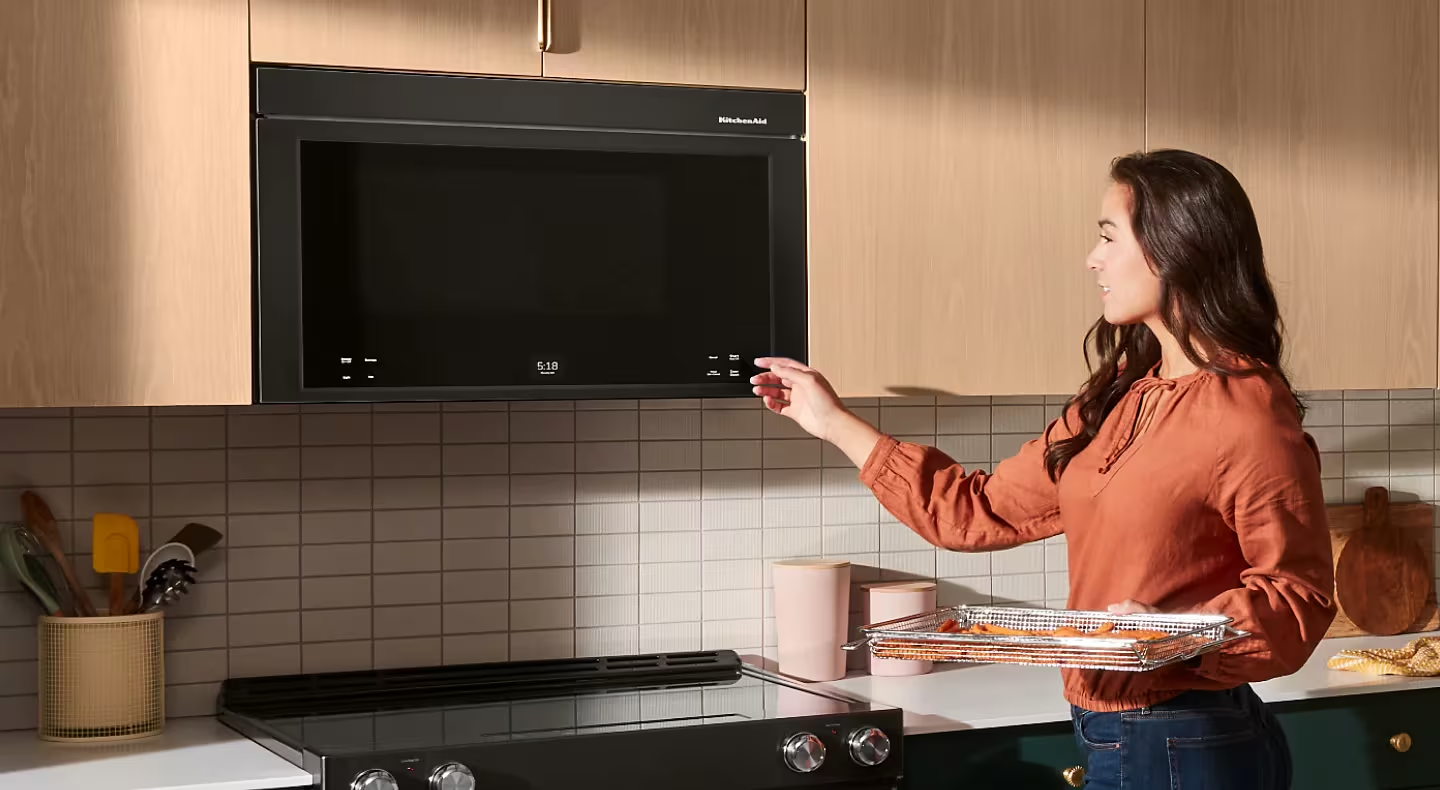
Air fryer vs. microwave
Some microwaves are beginning to offer air fry settings or other features that help achieve crispy, fried-like results. One of the main differences between these two appliances is that an air fryer or countertop oven circulates dry heat that helps remove moisture from the exterior of foods, while microwaves use electromagnetism to accelerate particles within the food.
If you are looking for optimal results on your air fried creations, choosing an appliance specially designed for the task is a smart choice. However, just as with countertop ovens or full-sized ovens, many types of microwaves generally offer more functions than a standalone air fryer.
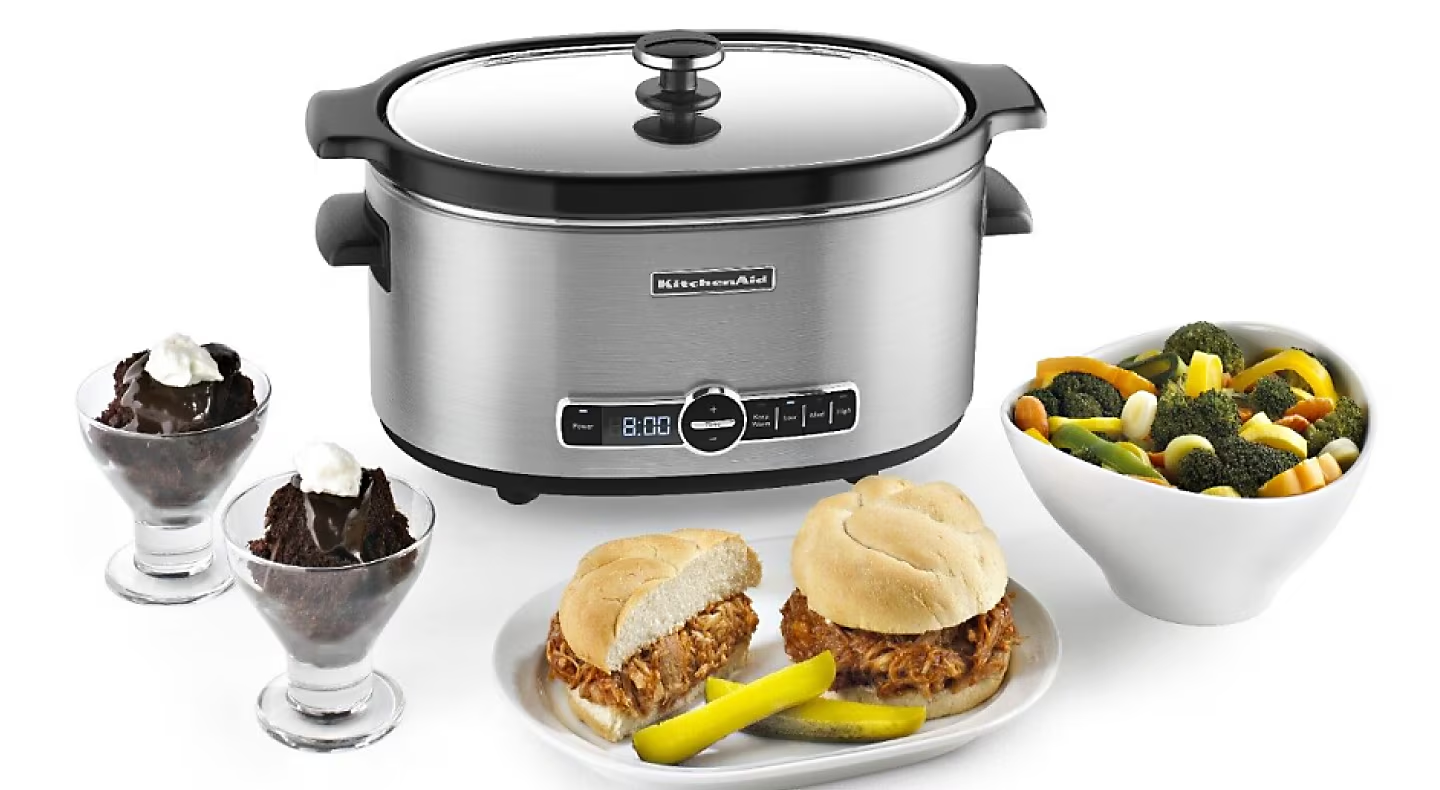
Air fryer vs. slow cooker
A slow cooker is a large pot with a lid and a heating source that cooks food at a lower temperature and requires some amount of liquid to roast, steam, braise or simmer ingredients. An air fryer relies on a dry environment to rapidly circulate hot air around food and can fry, bake and roast.
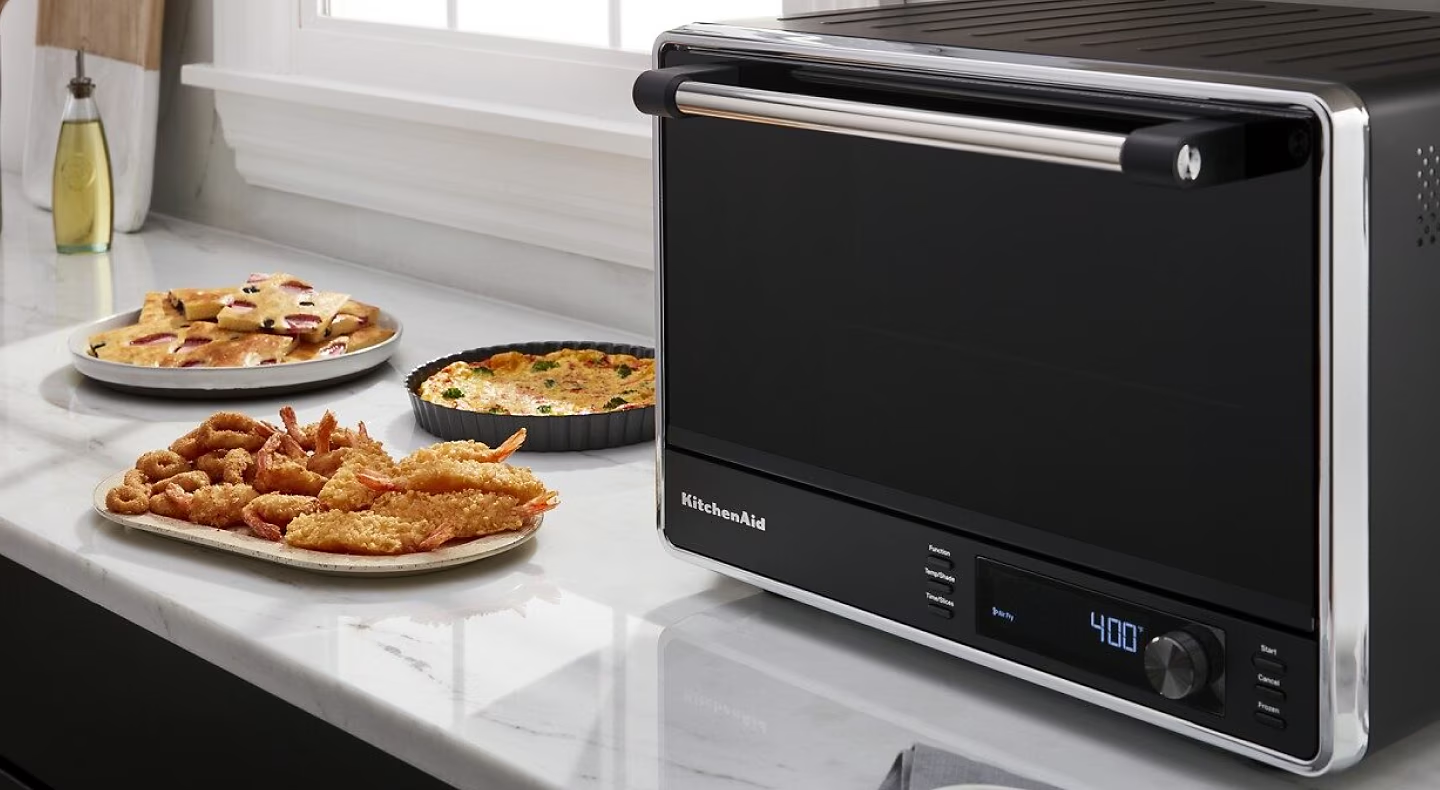
Air fryer vs. pressure cooker
An air fryer can fry, bake and roast food using little to no oil, while a pressure cooker is made to quickly boil, steam and braise. To determine which appliance is better for you, consider your cooking needs.
A pressure cooker works by converting liquid to steam that can’t escape, thus creating the pressure used in this cooking method. Because moisture is the enemy of crispy fried exteriors, you can’t air fry in a pressure cooker unless you have special accessories or attachments. Likewise, you can’t pressure cook in an air fryer, because the seal is not airtight enough to build pressure from steam. If you want to both pressure cook and air fry foods, you will likely need two separate appliances.
KitchenAid Chef
— Sharing our passion for making
At KitchenAid, we unite people who love cooking and baking, brewing and creating. For over 100 years, KitchenAid has worked on behalf of every Maker out there. Our iconic tools are made with you in mind — opening the door to new possibilities and helping you to get most out of making.

